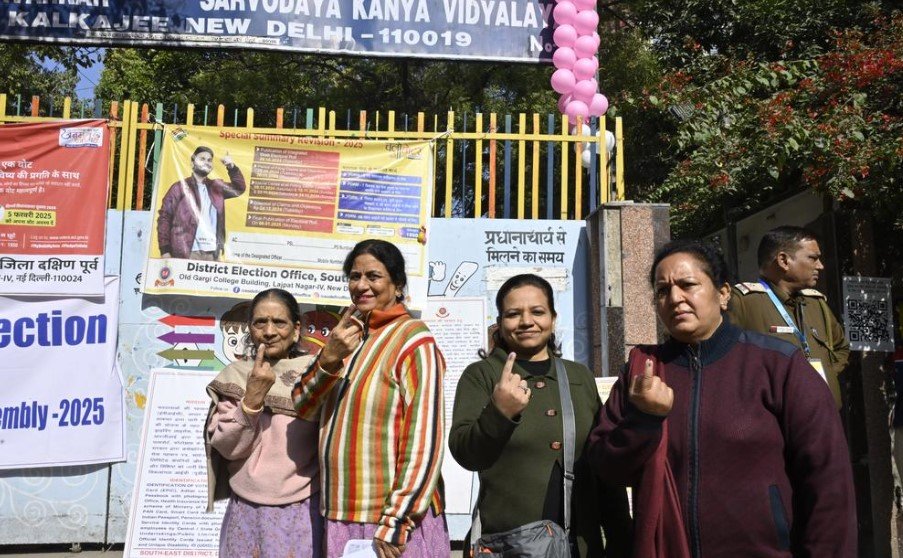A political storm is brewing in Delhi as counting progresses in the 2025 Assembly elections. The Bharatiya Janata Party (BJP) is on track for a historic victory, while the Aam Aadmi Party (AAP) is witnessing a dramatic fall in support. If the trends hold, the BJP will return to power in the capital after 28 years, ending AAP’s decade-long dominance.
BJP’s Resurgence After Nearly Three Decades
It has been a long wait for the BJP in Delhi. The last time the party held power in the capital was in 1998, before the Congress under Sheila Dikshit took over for three terms. The rise of AAP in 2013 reshaped the city’s political landscape, but today’s numbers suggest a major shift.
The BJP’s impressive showing in the Lok Sabha elections last year set the stage for its Assembly campaign. Riding on the momentum of national support and accusations against AAP leaders, the saffron party capitalized on anti-incumbency sentiments and a desire for change.
One thing is clear: the political map of Delhi is being redrawn, and the BJP is firmly in control.

AAP’s Struggles Amid Legal Battles And Anti-Incumbency
The AAP’s troubles have been mounting for months. Allegations of corruption and criminal cases against its top leaders created a challenging environment. As votes are being counted, early trends suggest a sharp drop in AAP’s vote share.
Voter fatigue also played a role. Having ruled for a decade, AAP faced criticism over governance, particularly in education, healthcare, and water supply. Additionally, the party’s repeated clashes with the Lieutenant Governor and the central government may have alienated a section of voters.
For Kejriwal and his party, this election is proving to be their toughest yet.
Congress Remains A Spectator
Once a dominant force in Delhi, the Congress party has struggled to regain relevance. Since losing power in 2013, the party has failed to make an impact in successive elections.
- Exit polls had already predicted a weak performance for the Congress.
- The party’s failure to offer a credible alternative further pushed voters towards either AAP or BJP.
- Internal rifts and leadership issues continue to plague its revival efforts in the capital.
So far, counting shows Congress making no major gains, making it a distant third in the race.
Voter Turnout And The Shift In Preferences
The voter turnout in Delhi this time was 60.54%, slightly lower than in 2020. While lower turnout often signals voter disinterest, in this case, it appears to have worked against the ruling AAP. Many voters who had supported Kejriwal in previous elections either stayed home or switched to the BJP.
A look at past voter turnouts:
| Year | Voter Turnout (%) | Ruling Party |
|---|---|---|
| 2015 | 67.12 | AAP |
| 2020 | 62.59 | AAP |
| 2025 | 60.54 | TBA |
This declining trend raises questions about voter enthusiasm and how Delhi’s political environment is changing.
What Lies Ahead?
If the BJP secures a clear majority, Delhi will witness a governance shift for the first time in nearly a decade. The party has promised infrastructure improvements, a corruption-free administration, and stronger coordination with the central government.
For AAP, the challenge will be survival. Losing Delhi would be a severe setback, given its national ambitions. The party will need to reassess its strategies and rebuild its support base.
The final results will confirm what the trends are already indicating—a political reset in the capital.
